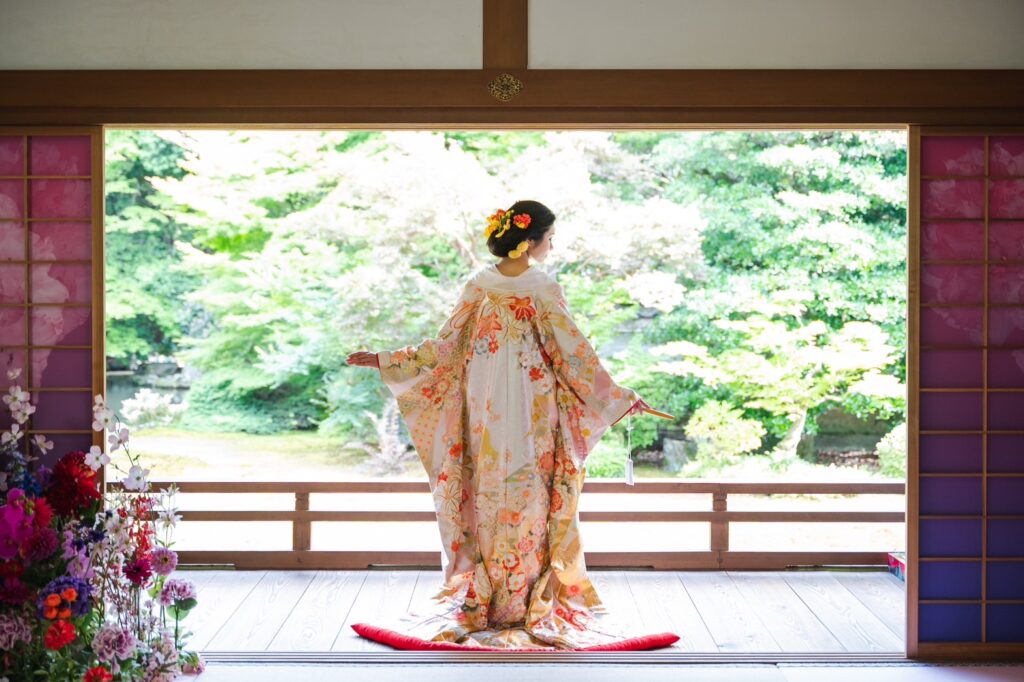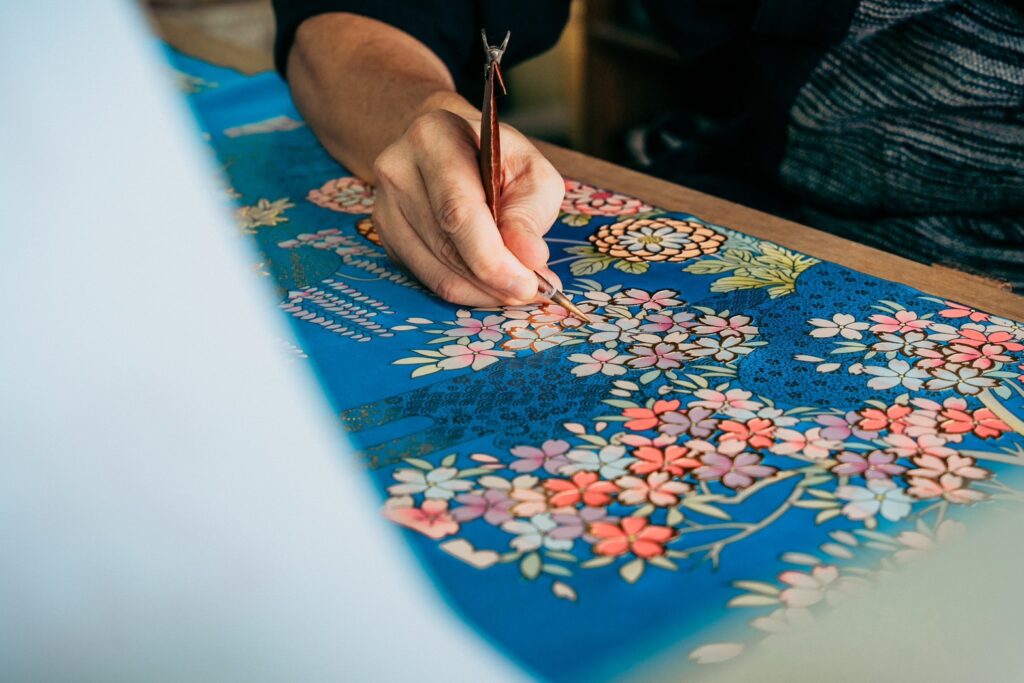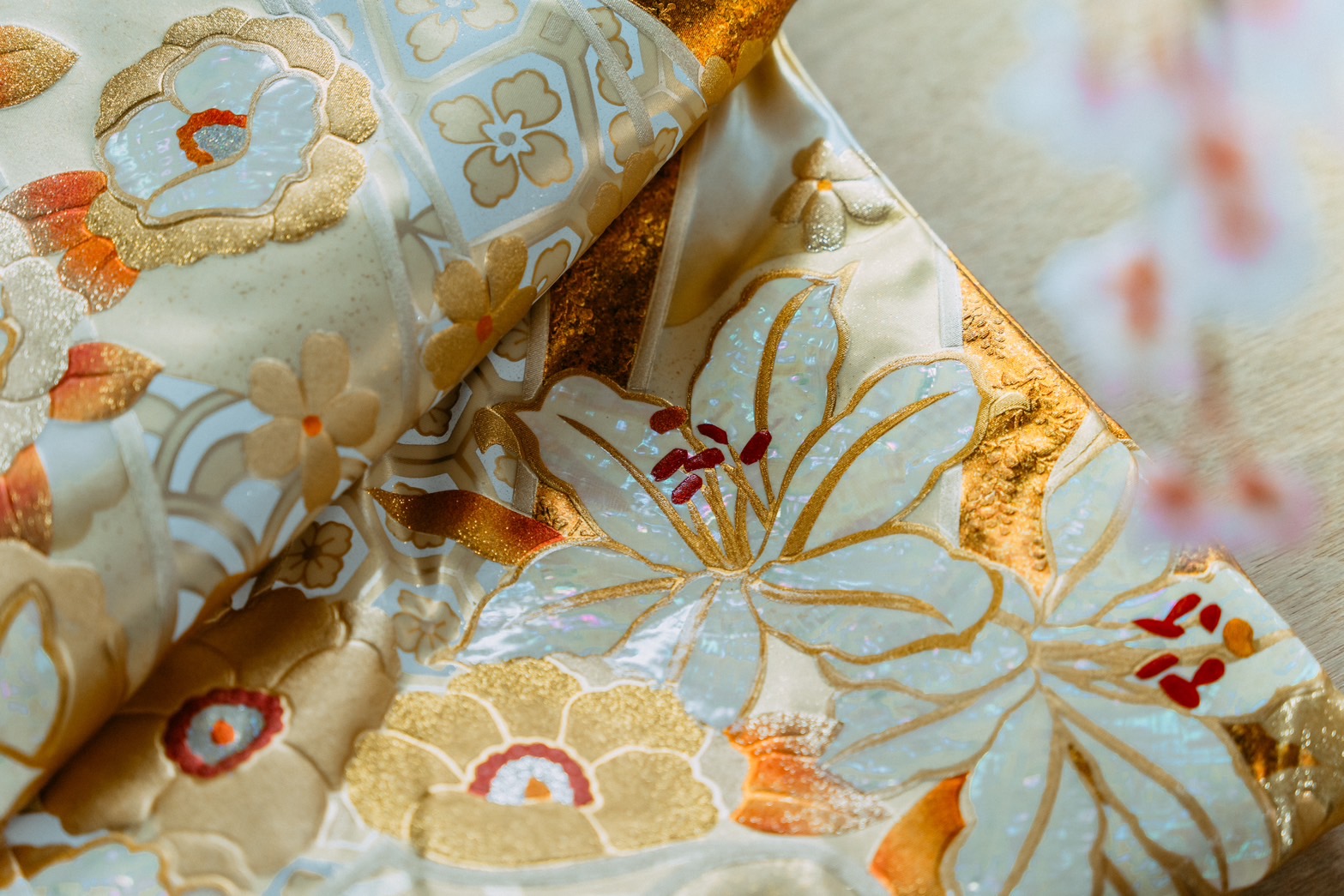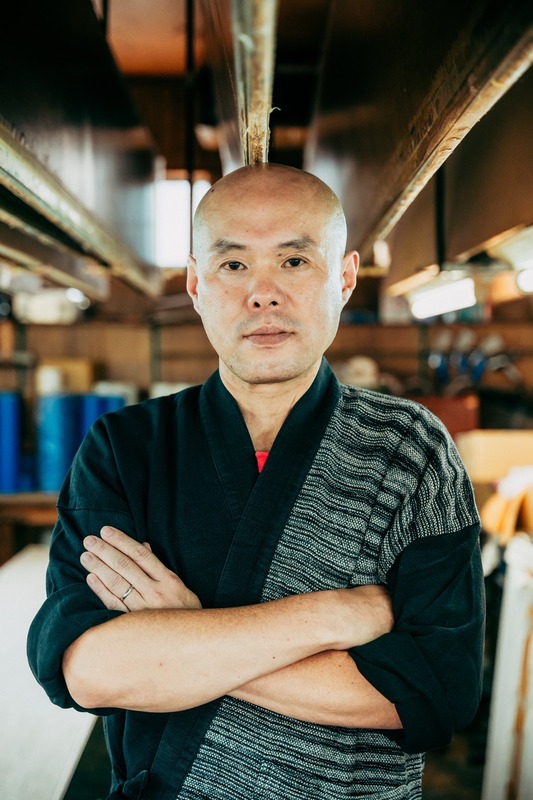Nobumi Miyake: Tradition and the Future of Japanese Artisans
What is rashisa (らしさ)? This unique Japanese suffix, often translated as “essence” or “identity,” encapsulates what makes something distinctly itself. It can represent individuality (自分らしさ or self-likeness), national identity (日本人らしさ or Japanese-ness) and the cultural essence of Japan (日本らしさ or Japan-ness). These nuanced layers are deeply interwoven yet distinct, offering a fascinating lens to explore the richness of Japanese tradition and its relevance in the modern world.
I recently had the privilege of speaking with Nobumi Miyake, a renowned artisan and the creative force behind the brand NOB MIYAKE. Specializing in kin-sai (金彩), a traditional gold-decorating technique, Nobumi crafts exquisite bridal kimonos, known as uchikake (打掛). Through our conversation, he shared his journey as an artisan, the interplay between tradition and modernity and his belief in the innate potential of Japanese culture. His story—a testament to individuality, dedication and innovation—offers a powerful narrative about preserving and evolving Japanese traditions.
Legacy Rooted in Individuality

Born into a family of kimono artisans, Nobumi was surrounded from a young age by the tools, techniques and philosophy of traditional craftsmanship. Yet, he confesses, “I never thought I would continue the legacy of a craftsman.” It was a pivotal moment during his final year of high school that shifted his path. Rejecting the conventional trajectory of higher education and corporate life, Nobumi chose to follow in his parents’ footsteps. However, before joining the family workshop, his parents insisted he train under another master. This apprenticeship not only honed his skills but also introduced him to the breathtaking world of bridal uchikake, which ultimately became his artistic calling.
“Bridal kimono felt more like me,” he said. “I was always encouraged to create something new—always something new. It didn’t have to be traditional; it could be anything in the world.” This drive to innovate, combined with a deep respect for tradition, became the foundation of his craft.
Sharing Japan’s Cultural Essence with the World

While Nobumi’s work is deeply personal, he sees himself as a custodian of 日本らしさ—the cultural identity of Japan. He believes that tradition must evolve to resonate with new audiences. Through creating luxurious accessories, interior design pieces and collaborating with international brands, he ensures that the beauty of Japanese craftsmanship transcends borders.
In our discussion, Nobumi explained how tastes vary across regions: in Europe, subtle and refined aesthetics with a hint of Japanese influence are favored, while in the U.S., vibrant and explicitly Japanese styles captivate audiences. Regardless of the market, one constant remains: “I always make sure to include kin-sai, my roots, in all my pieces.” By blending his roots with innovation, Nobumi bridges the gap between preserving tradition and making it accessible to the world.
Embracing the Potential of Japanese People

At the heart of Nobumi’s mission is his belief in the unique potential of Japanese people. “It’s not about better or worse, but compared to the world, [Japanese people have] an unparalleled culture, way of thinking and philosophy. I truly believe it’s one-of-a-kind.” He shared everyday examples of Japanese values, such as returning lost wallets to the police or people waiting in line in an orderly fashion to receive relief supplies after the 2011 Tohoku earthquake.
However, Nobumi expressed concern that while the world increasingly admires Japanese culture, many Japanese people undervalue their own heritage. “The rest of the world recognizes how special Japan is, but we as Japanese people do not realize that. We haven’t been educated to do so.” His words carry both a challenge and a hope for the future.
Celebrating Marriage in Modern Japan

For Nobumi, the celebration of marriage is one of life’s most profound expressions. Through his bridal kimonos, he seeks to elevate the significance of these traditions in contemporary Japan. “[Marriage is] supposed to be a ceremony; it’s a declaration of commitment to love in front of the kan-nushi (Shinto priest)”, he explained. In a time when fewer people celebrate such milestones, Nobumi’s work serves as a poignant reminder of their beauty and importance.
Passing Down a Living Tradition

For Nobumi, preserving rashisa is not merely about maintaining traditions—it’s about inspiring future generations to see their worth. Through his breathtaking bridal creations, he celebrates love, innovates his craft and shares the true beauty of Japan with the world. This dedication extends to nurturing his own family’s legacy. His son, currently apprenticing under him, is learning both the techniques and philosophy of the craft. Yet Nobumi remains adamant about allowing his son the freedom to chart his own path. “I just want him to be free to do what he wants, with no constraints.”
Sharing Rashisa with the World
As Japan faces challenges such as a declining population and an aging society, preserving its cultural identity becomes more critical than ever. Nobumi believes that showcasing the brilliance of Japanese craftsmanship globally can help revitalize these industries and foster a renewed sense of pride among Japanese people.
“How happy will the world be—I always think about that”, he said. Whether through the joy of wearing a one-of-a-kind bridal kimono or the appreciation of Japanese artistry, his work serves as a bridge between past and future, Japan and the world.
The question for all of us is this: How can we better embrace and share rashisa? For Nobumi, the answer lies in action—through creativity, collaboration and a commitment to the values that make Japan truly unique.

Website: nobmiyake.net/
Online Store: nobmiyake.official.ec/ Book a Kimono Workshop Tour at NOB MIYAKE: wabunka-lux.jp/experiences/en_miyake-kogei/

